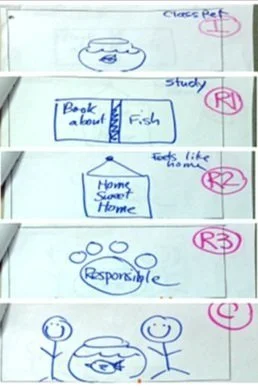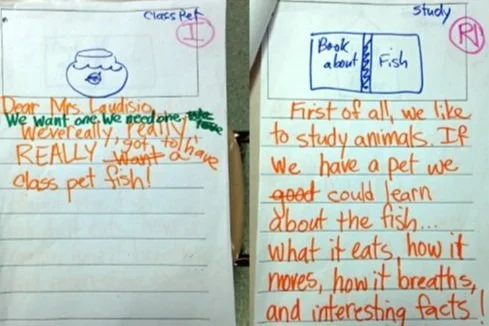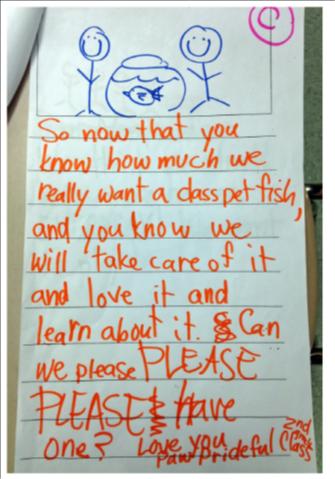Shared Drawing & Writing
Shared Drawing
Shared drawing is a wonderful support for prekindergarten and kindergarten writers. I was so fortunate to have the book, Talking, Drawing, Writing: Lessons for Our Youngest Writers by Martha Horn and Mary Ellen Giacobbe cross my path years ago. This book helped me and my students become better artists. Our drawings went from stick-figures to close representations of people, places and animals. Martha and Mary Ellen gave me the words to express why drawing is critical for young writers. Here are their reasons:
“…drawing is one primal way that beginning writers represent and understand meaning.”
…”drawing is a way for children to be heard. A student who has difficulty recognizing letters, perhaps even the letters in his name, can often draw what he knows, thinks and feels.”
“…drawing is a medium through which children can develop language.”
“…drawing allows children to go deeper into their stories.”
“…through drawing, children are learning about the craft of writing. Because talking, drawing, and writing are three aspects of a complex ‘symbol weaving’ (Dyson 1986), over time we have come to see that what children learn how to do in one mode sets the stage for and supports learning how to do it in the others.”
Shared drawing gives teachers the opportunity to create realistic drawings with students (possibly with labels when appropriate) often based on shared-class events. These 10-15 minute shared drawing sessions can begin with storytelling past shared experiences then collaboratively deciding which part of the experience will be captured through drawing.
While the teacher creates the drawing, students guide the work by asking and answering:
Which shapes do we need (to build/show our event)?
Which colors do we need (to build/show our event)?
Where should we place the shapes on the paper (to build/show our event)?
Shared drawing can also support and immerse young writers in the structure, volume and development of various genres, preparing them for work that they will take on later independently during writing workshop.
Shared Writing based on shared experiences
shared experiences
Trying new things is always better when we do it with others - risks aren’t taken alone, and successes can be celebrated together. When we ask students to write within a new genre, authentic collaborative practice can build the foundation they will stand on as they tackle this new work independently in the days to come. Collaborative writing practice is made even more powerful when focused around a relevant shared experience.
Each moment of the teaching day is sacred – it can be hard to imagine adding anything to an already packed schedule. But providing young writers with even 8-10 minute relevant shared experiences will ultimately serve as a tremendous support for their understanding of upcoming independent work.
Shared Writing
Shared writing paves the way for students’ independent work within a genre and can be used across all grades. Once your class has had the shared experience you’ve planned, you’ll write about it together over a 10-15 minute session. This is not interactive writing where students and teachers share the pen; rather, the teacher tends to scribe the piece as students collaboratively invent it. The experience of writing collaboratively supports students’ independent work and also provides a class-created mentor text to go along with other mentors you’ve undoubtedly collected. I describe this in-depth in my article, “Living a Genre.”
This structure also immerses writers in the structure, volume and development of various genres, preparing them for writing work that they will take on later independently during writing workshop.
This piece of writing (pictured), along with the planning template from the first session of shared writing, became a mentor for the children as they launched into their own independent writing of persuasive letters. Once children have experienced writing together in a new genre about an event they’ve shared, they will be primed to launch into trying this new work on their own, and they’ll have the touchstones of the shared experience and the shared writing to support their work!





